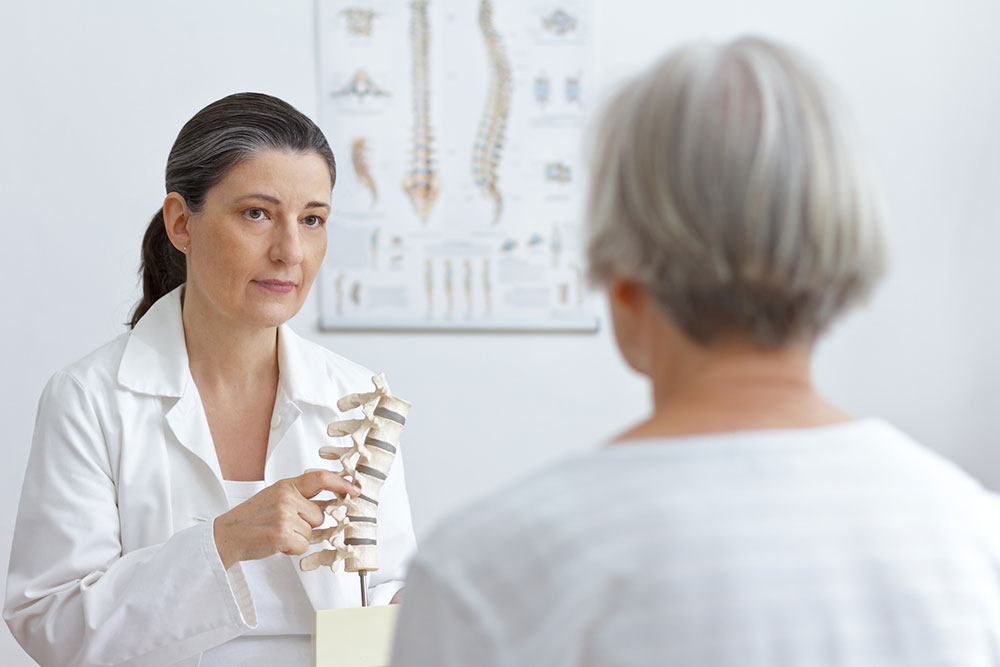
SMA – Causes, symptoms, causes, and management
The condition known as Spinal Muscular Atrophy (SMA) affects motor neurons, which are nerve cells that regulate voluntary muscle movement. These cells make up the spinal cord. The muscles atrophy, or weaken and shrink, from inactivity because they cannot react to signals from the nerves. One in every 6,000 babies is born with this condition. It is one of the most prevalent genetic disorders in young children. This article sheds light on its causes, symptoms, and treatment.
Understanding spinal muscular atrophy
It is an uncommon genetic condition that affects the muscles and movement. It is depicted by the loss of motor neurons in the spinal cord. This results in muscle weakness and the condition of atrophy.
SMA can vary in severity, with some individuals experiencing mild symptoms while others may be severely affected. This condition typically begins in infancy or early childhood and can impact daily activities and quality of life.
Causes of spinal muscular atrophy
Spinal Muscular Atrophy is a complex genetic condition with a range of causes. Let’s take a closer look at what may be responsible for the development of this condition:
- Genetic mutations
The primary cause of SMA is a mutation or transformation in the Survival Motor Neuron 1 gene, also abbreviated as SMN1. This neuron is accountable for yielding protein, which is essential for the survival of motor neurons. This mutation leads to a deficiency of this protein, degeneration, and loss of motor neurons. - Hereditary
SMA can be inherited autosomally recessively, meaning both parents must carry the mutated SMN1 gene for a child to develop the condition. If both are carriers, each child has a 25% chance of having SMA. - Gene copy number
The severity of SMA can also be influenced by the number of copies of the SMN2 gene, a backup gene that produces a similar protein to SMN1. Individuals with more copies of the SMN2 gene tend to have milder forms of SMA.
Symptoms of spinal muscular atrophy
Identifying the telltale symptoms of SMA is pivotal for early diagnosis and productive management of the condition. Here are some common symptoms of SMA to watch out for:
- Muscle weakness
One of the primary symptoms of SMA is muscle weakness. Infants may have difficulty holding their heads up, sitting, or crawling, while older children and adults may experience difficulty walking, climbing stairs, or performing other motor tasks. - Decreased muscle tone
SMA can cause decreased muscle tone, also known as hypotonia. This can manifest as floppy or limp limbs, making it challenging for individuals with SMA to move or hold their bodies upright. - Respiratory difficulties
SMA can affect the muscles responsible for breathing, leading to respiratory difficulties. Symptoms may include shortness of breath, shallow breathing, or recurrent respiratory infections. - Motor function decline
As SMA progresses, individuals may experience a decline in motor function. This can manifest as difficulties with fine motor skills, such as gripping objects or writing, and gross motor skills, such as walking or standing. - Scoliosis
SMA can also cause scoliosis, a curvature of the spine. This can result in postural changes and further impairments in mobility.
Treatment options for spinal muscular atrophy
It’s essential to explore the various treatment options available. Here are two key approaches that can help manage the condition of SMA and improve quality of life:
- Gene replacement therapy
This groundbreaking treatment aims to replace the defective SMN1 gene with a functional copy. It involves delivering the correct gene to motor neurons using a viral vector. Gene replacement therapy has shown promising results in clinical trials and has been approved in some countries. - Disease-modifying therapy
Several disease-modifying therapies have been developed to slow down the progression of SMA. These treatments work by increasing the production of the survival motor neuron protein or modifying the function of the backup SMN2 gene. They can help improve motor function and prolong survival in individuals with SMA.
Natural remedies for spinal muscular atrophy
Living with spinal muscular atrophy can be challenging, but there are natural remedies that may help manage the condition or symptoms and improve quality of life. While consulting with healthcare professionals for comprehensive treatment is important, some individuals find relief from SMA through alternative approaches. Here are some natural remedies for SMA that may be worth exploring:
- Exercises and stretches
Stretches and workouts can keep joints from stiffening up and help one maintain strength. A physical therapist can recommend certain workouts. One’s condition will determine how much exercise one or one’s child can get, but it’s important to make an effort to be as active as possible.
- Breathing help
There are several treatment methods for those with breathing problems because of SMA that can be tried. These include chest physiotherapy and breathing exercises to strengthen muscles and make coughing easier. The use of a suction machine can help clear the throat when needed and clear mucus from the chest.
- Massage
Therapeutic massage can help relax muscles, improve circulation, and reduce pain and stiffness. It may also promote relaxation and a sense of well-being.




